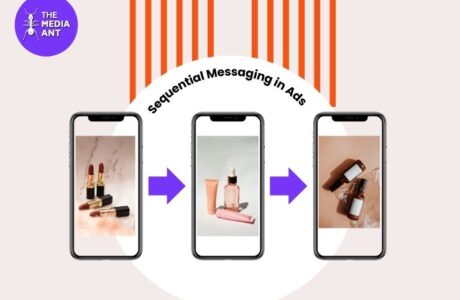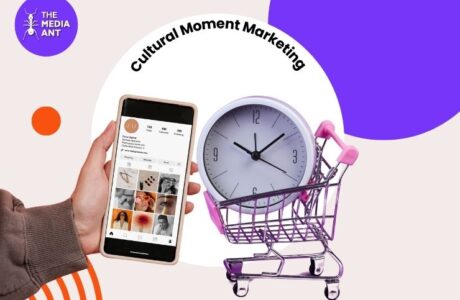Vernacular marketing is basically talking to people in their language. Imagine trying to sell ice cream to someone in Spanish when they only speak English – not gonna fly, right?
So, instead of using one size fits all ads, vernacular marketing is all about creating messages that really connect with people by using the words and vibes of their local area. Think funny slang, cultural references, and even local lingo. It’s like having a really good chat with your neighbor about your product, you know?
Vernacular marketing is a strategic approach that leverages local language, culture, and nuances to connect with a specific target audience. By speaking to consumers in their native tongue and understanding their unique preferences, businesses can build stronger relationships, increase brand loyalty, and drive sales.
Why is Vernacular Marketing Important?
Vernacular marketing, which involves using local languages and dialects in marketing communications, has gained significant importance in recent years. Here’s why:
- Deep Connection: Builds stronger bonds with customers by speaking their language.
- Increased Trust: Creates a sense of familiarity and authenticity.
- Wider Reach: Taps into untapped markets and diverse audiences.
- Better Engagement: Higher interaction rates and improved customer satisfaction.
- Competitive Edge: Stands out from competitors by offering a personalized experience.
- Cost-Effective: Often more affordable than traditional marketing methods.
- Cultural Relevance: Understands local nuances and preferences.
9 Key Strategies for Vernacular Marketing
Vernacular marketing is about more than just translation; it’s about deep cultural immersion and understanding. Here are key strategies to effectively connect with your target audience:
1. Deep Cultural Understanding
- Immerse Yourself: Spend time understanding the local culture, traditions, and values.
- Language Proficiency: Ensure your team has a deep understanding of the local language, including nuances and slang.
- Cultural Sensitivity: Be mindful of local customs and avoid any offensive content or messaging.
2. Localized Content Creation
- Authenticity: Create content that genuinely resonates with the local audience.
- Local References: Incorporate local landmarks, events, or cultural icons into your messaging.
- Humor and Idioms: Utilize local humor and idioms to create relatable content.
- Visuals: Use imagery that reflects the local culture and aesthetic.
- User-Generated Content: Encourage local consumers to share their experiences.
3. Leveraging Local Influencers
- Identify Relevant Influencers: Partner with influencers who have a strong connection with the local community.
- Authentic Collaborations: Create authentic partnerships that align with the influencer’s brand.
- Amplify Reach: Utilize the influencer’s network to expand your brand’s visibility.
4. Multilingual Platforms
- Website Localization: Create localized versions of your website with relevant content and design.
- Social Media: Maintain active profiles in local languages and engage with the audience.
- Customer Support: Offer support in local languages to enhance customer satisfaction.
5. Data-Driven Approach
- Audience Insights: Gather data on local consumer behavior, preferences, and demographics.
- Performance Tracking: Monitor the performance of your vernacular marketing campaigns.
- Optimization: Use insights to refine your strategy and improve results.
6. Offline Engagement
- Local Events: Participate in local events, festivals, and community initiatives.
- Public Relations: Build relationships with local media outlets.
- Physical Stores: If applicable, tailor store experiences to the local culture.
7. Translation and Localization
- Beyond Translation: Go beyond literal translation and adapt content to fit the local context.
- Cultural Nuances: Consider cultural differences in language, humor, and messaging.
- Local Testing: Get feedback from native speakers to ensure accuracy and cultural relevance.
8. Customer Support
- Language Proficiency: Ensure customer support representatives are fluent in local languages.
- Local Knowledge: Equip support teams with knowledge of local customs and preferences.
- Personalized Service: Offer personalized support that reflects local values.
9. Measurement and Iteration
- Key Performance Indicators (KPIs): Define relevant KPIs to measure campaign success.
- Data Analysis: Analyze campaign performance to identify strengths and weaknesses.
- Continuous Improvement: Use insights to optimize your vernacular marketing strategy.
By following these strategies, you can effectively connect with your target audience, build brand loyalty, and drive business growth through vernacular marketing.
Best Examples to Understand Vernacular Marketing
Vernacular marketing is booming, especially in countries with diverse linguistic landscapes like India. Let’s explore some standout examples:
- Lufthansa’s ‘More Indian Than You Think’ Campaign: Targeting non-English speaking flyers, Lufthansa created a microsite in five Indian languages, boosting passenger growth by 13%.
- Ola, Paytm, BookMyShow: These giants have successfully incorporated Hindi and other regional languages, making their services accessible to a wider audience.
- Regional Language Content Creators: Influencers like Bhuvan Bam (YouTube), Ashish Chanchlani (YouTube), and Dolly Singh (Instagram) have massive followings by creating content in Hindi and other regional languages.
- E-commerce Giants: Amazon and Flipkart have invested heavily in vernacular language interfaces and content to tap into the vast Indian market.
Global Examples
While India is a prime example, vernacular marketing is gaining traction globally:
- Latin America: Brands using Spanish and Portuguese to connect with local consumers.
- Africa: Companies leveraging local languages and cultures to build strong brand presence.
- Southeast Asia: Brands adapting marketing strategies to cater to diverse linguistic groups.
Frequently Asked Questions
What is an example of a vernacular?
Lufthansa’s “More Indian Than You Think” campaign is a classic example of vernacular marketing.
To appeal to the vast Indian market, Lufthansa created a microsite in five Indian languages. This move helped them connect with non-English speaking flyers and ultimately boosted their passenger count by 13%.
By using local languages and tailoring their message to Indian audiences, Lufthansa successfully tapped into a previously untapped market.
This is a great example of how understanding and utilizing vernacular languages can significantly impact a brand’s success.
What is vernacular media?
Vernacular media is media content created in a local or regional language, rather than a standard or national language. It’s designed to connect with people on a deeper level by using language and cultural references they can relate to.
What is a vernacular concept in marketing?
A vernacular concept in marketing refers to the idea of using local language, culture, and nuances to connect with a specific target audience. It’s about tailoring your marketing message to resonate with people on a deeper level by speaking their language, understanding their values, and incorporating elements of their everyday life into your campaigns.
What is the vernacular content market in India?
The vernacular content market in India is a rapidly growing industry focused on creating and distributing content in regional languages. It’s a vast market with huge potential due to India’s linguistic diversity and increasing internet penetration.





